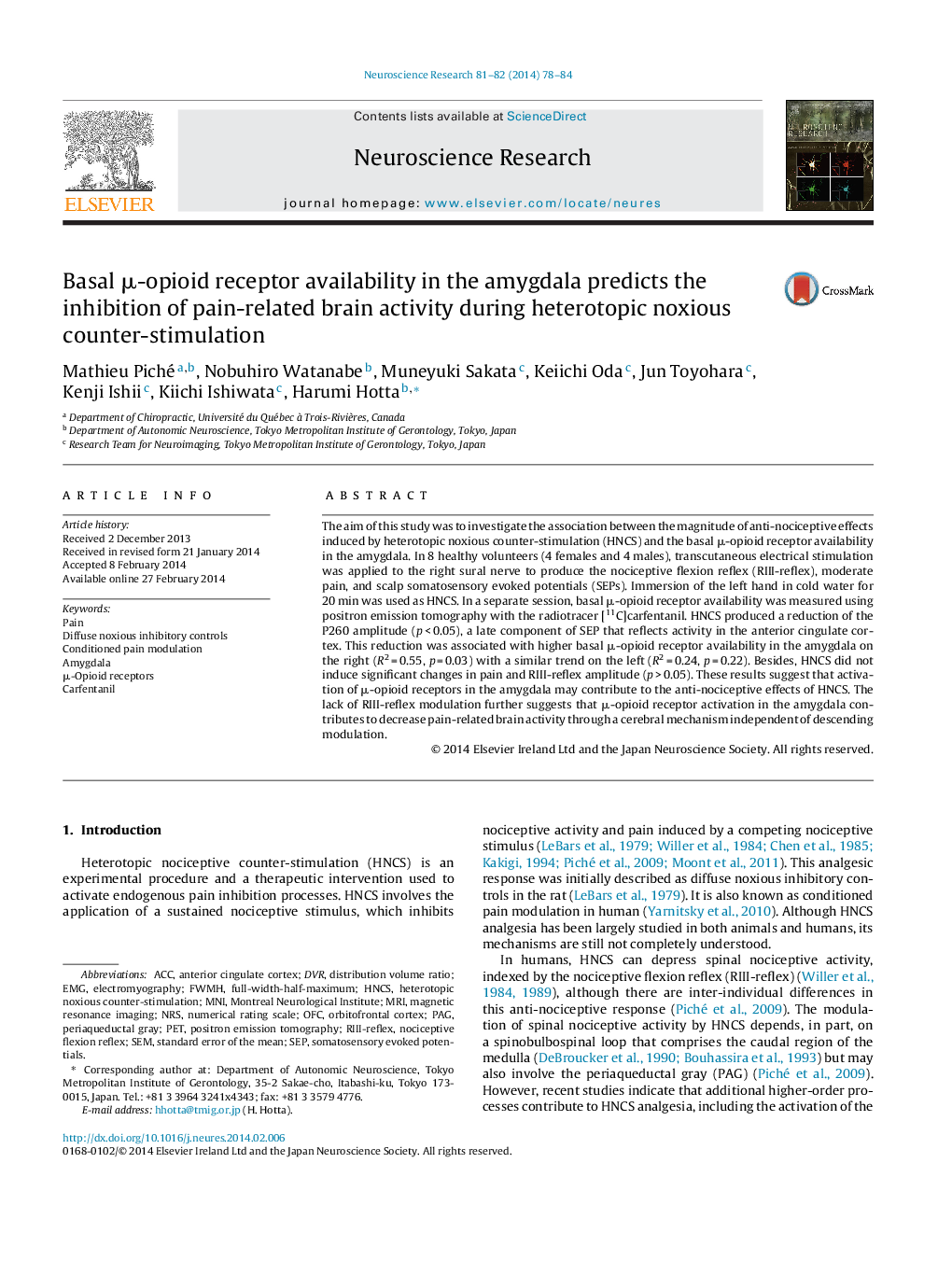| کد مقاله | کد نشریه | سال انتشار | مقاله انگلیسی | نسخه تمام متن |
|---|---|---|---|---|
| 6286284 | 1615301 | 2014 | 7 صفحه PDF | دانلود رایگان |

- Anti-nociceptive effects of heterotopic noxious counter-stimulation (HNCS) were measured.
- Basal μ-opioid receptor availability was quantified in a separate session.
- The amplitude of somatosensory evoked potentials (P260 component) was reduced by HNCS.
- This was associated with higher μ-opioid receptor availability in the amygdala.
- μ-Opioid receptors in the amygdala may contribute to the anti-nociceptive effects of HNCS.
The aim of this study was to investigate the association between the magnitude of anti-nociceptive effects induced by heterotopic noxious counter-stimulation (HNCS) and the basal μ-opioid receptor availability in the amygdala. In 8 healthy volunteers (4 females and 4 males), transcutaneous electrical stimulation was applied to the right sural nerve to produce the nociceptive flexion reflex (RIII-reflex), moderate pain, and scalp somatosensory evoked potentials (SEPs). Immersion of the left hand in cold water for 20 min was used as HNCS. In a separate session, basal μ-opioid receptor availability was measured using positron emission tomography with the radiotracer [11C]carfentanil. HNCS produced a reduction of the P260 amplitude (p < 0.05), a late component of SEP that reflects activity in the anterior cingulate cortex. This reduction was associated with higher basal μ-opioid receptor availability in the amygdala on the right (R2 = 0.55, p = 0.03) with a similar trend on the left (R2 = 0.24, p = 0.22). Besides, HNCS did not induce significant changes in pain and RIII-reflex amplitude (p > 0.05). These results suggest that activation of μ-opioid receptors in the amygdala may contribute to the anti-nociceptive effects of HNCS. The lack of RIII-reflex modulation further suggests that μ-opioid receptor activation in the amygdala contributes to decrease pain-related brain activity through a cerebral mechanism independent of descending modulation.
Journal: Neuroscience Research - Volumes 81â82, AprilâMay 2014, Pages 78-84